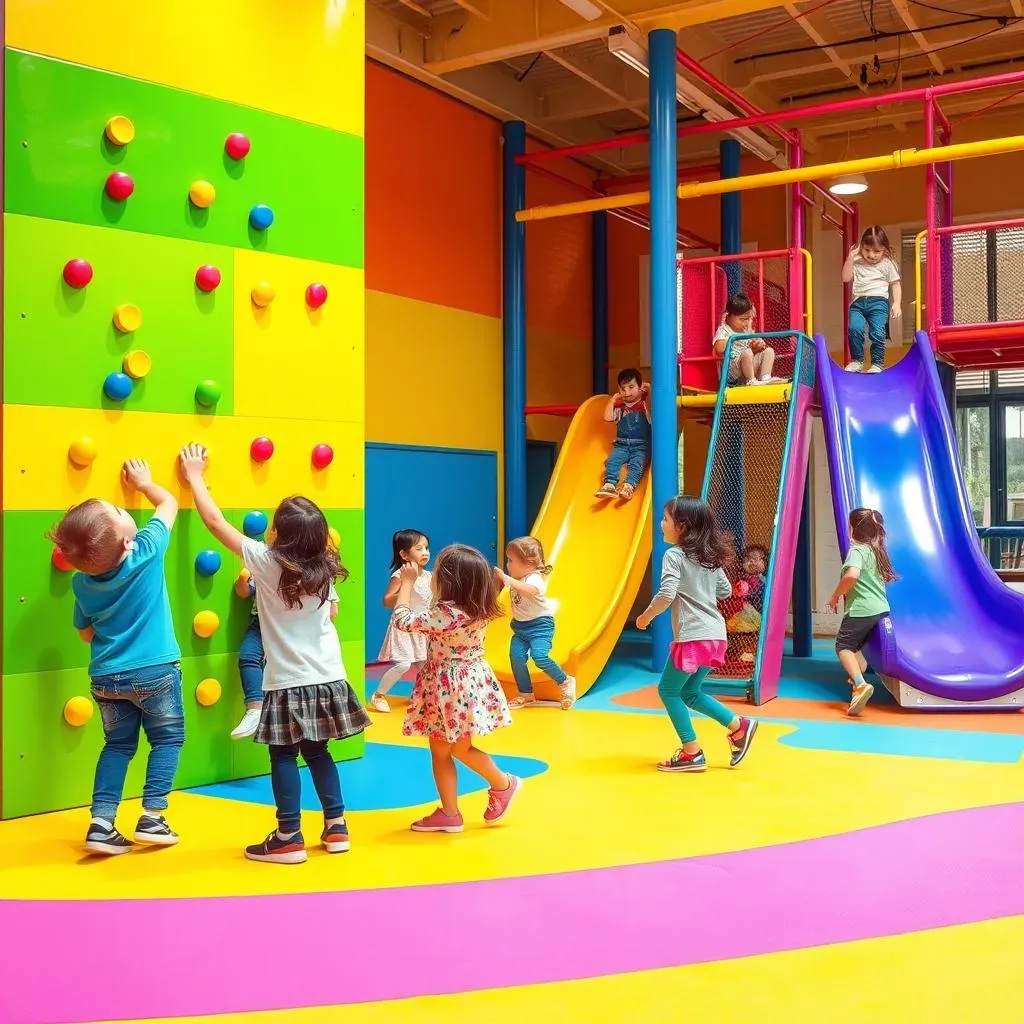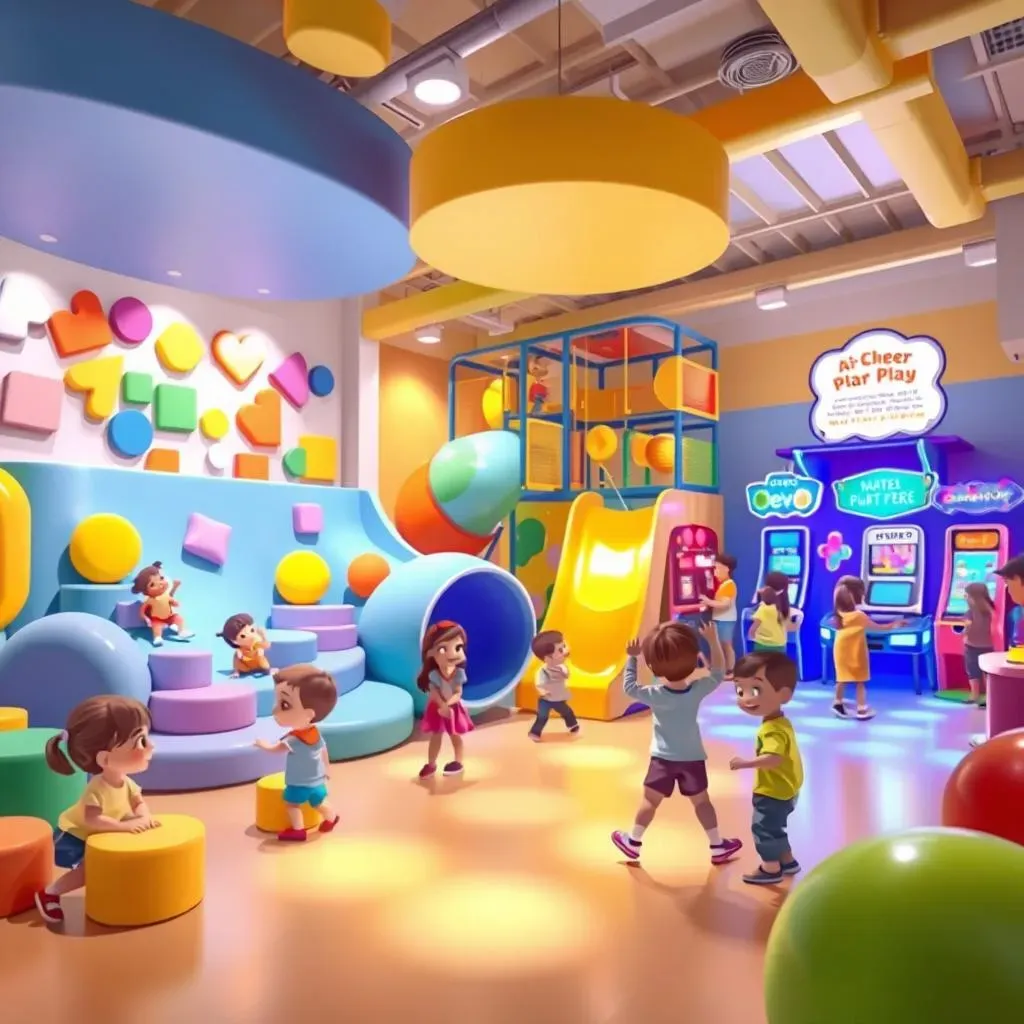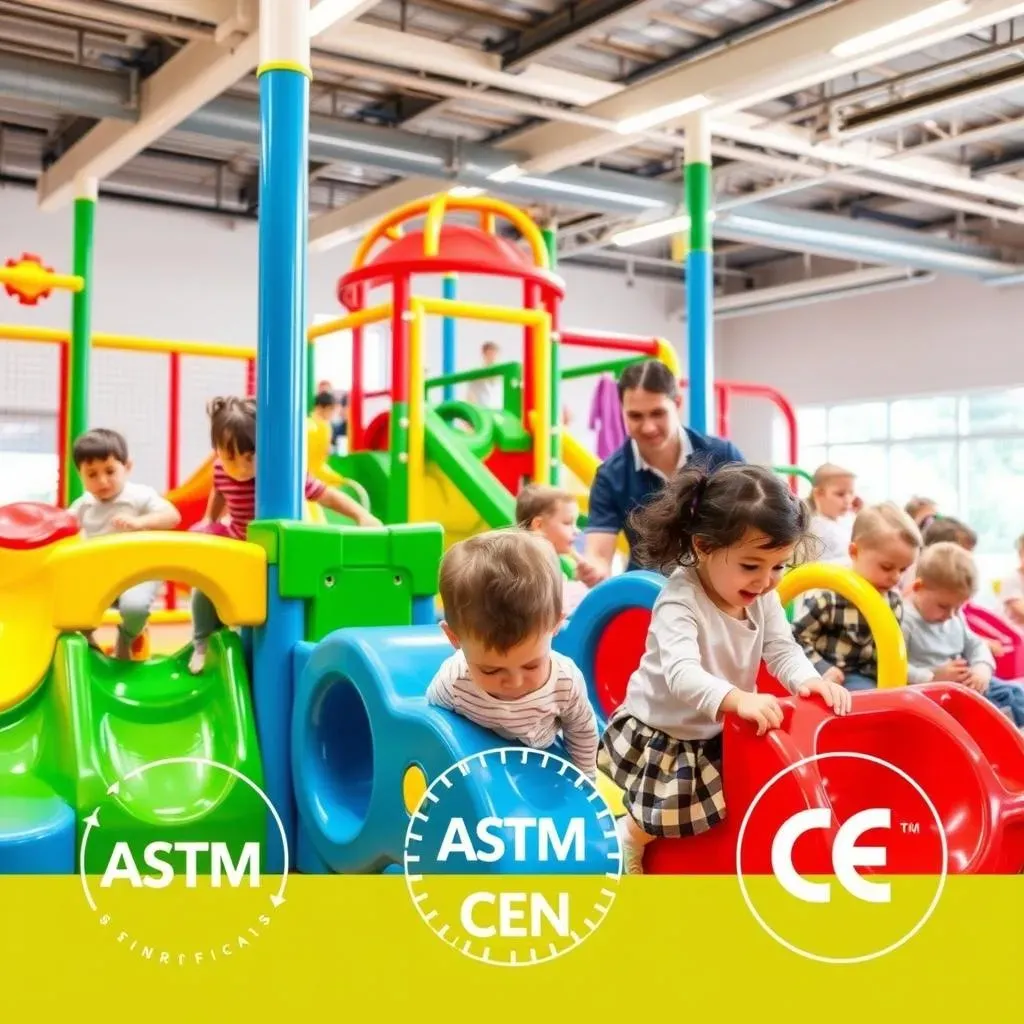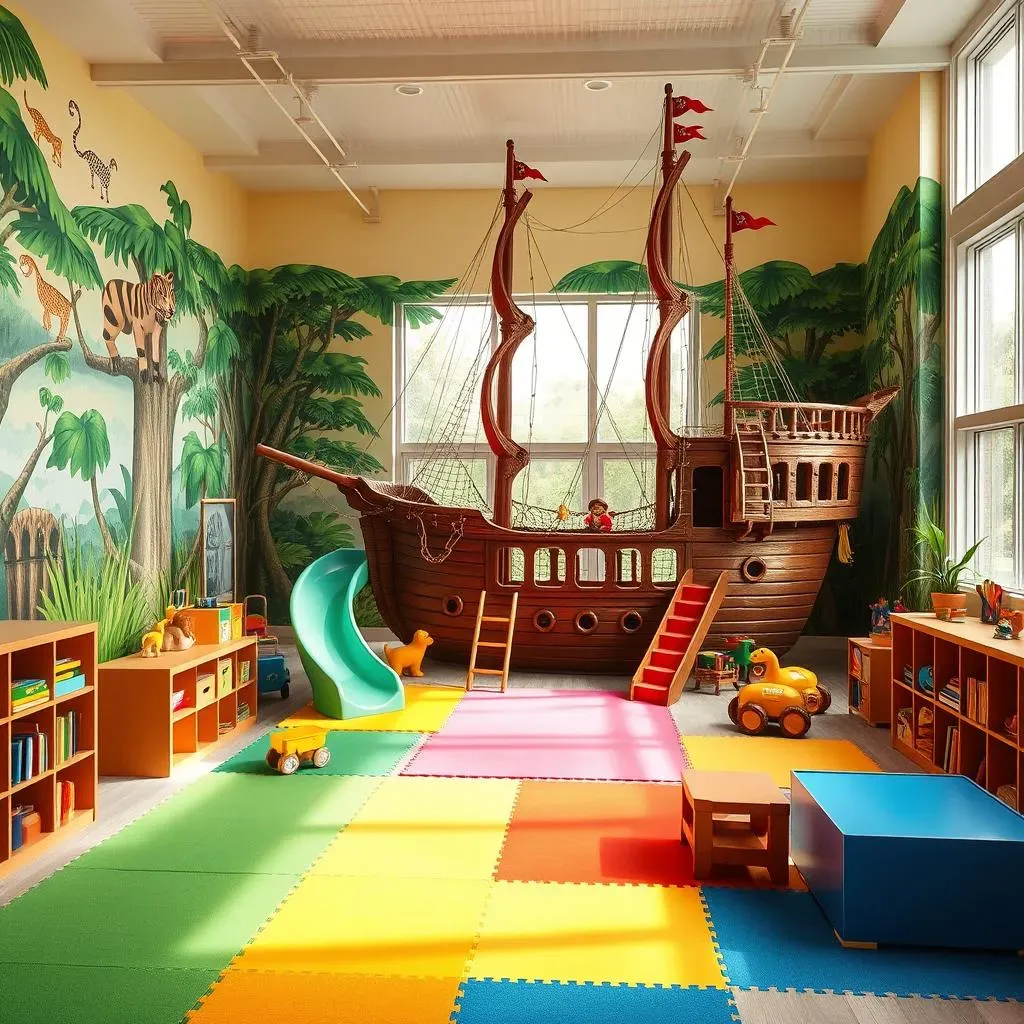Table of Contents
Looking to create a fun, engaging, and safe space for kids? Investing in the right indoor play area equipment is key. Whether you're designing a family entertainment center, a daycare, or simply a playroom at home, the choices you make about play structures and equipment can make all the difference. This article will guide you through everything you need to know, from understanding why quality matters to selecting the perfect types of equipment for your space and needs. We'll dive into the essential safety standards and maintenance practices that ensure a worry-free environment for kids to explore and play. Plus, we'll share inspiring design tips to help you create an indoor play area that's not only fun but also fosters creativity and development. So, get ready to transform your space into an unforgettable adventure zone!
Why Invest in Quality Indoor Play Area Equipment?

Why Invest in Quality Indoor Play Area Equipment?
Let's be real, when it comes to indoor play area equipment, cutting corners might seem tempting. But trust me, investing in quality is an investment in so much more than just the equipment itself. Think about it: you're investing in the safety of the children who will be using the space, in the longevity of the equipment, and in the overall experience you're creating. Cheap, poorly made equipment can pose serious safety hazards, leading to injuries and potential liability issues. Plus, it's likely to break down quickly, costing you more in the long run with repairs and replacements. Nobody wants that headache!
High-quality equipment, on the other hand, is built to last. It's designed with safety in mind, using durable materials and construction techniques that can withstand the wear and tear of active play. This not only reduces the risk of accidents but also ensures that your play area remains a fun and engaging space for years to come. Moreover, quality equipment often comes with better warranties and customer support, giving you peace of mind knowing that you're protected in case of any issues. It's about creating a space where kids can be kids, without you constantly worrying about safety or equipment failure. It's a win-win!
- Safety First: Minimizes injuries and liability.
- Long-Term Savings: Reduces repair and replacement costs.
- Enhanced Experience: Creates a more enjoyable and engaging play environment.
- Peace of Mind: Offers better warranties and customer support.
Key Considerations When Selecting Indoor Play Structures

Key Considerations When Selecting Indoor Play Structures
so you're ready to dive into choosing indoor play structures? Awesome! But before you get swept away by all the colorful options, let's pump the brakes and talk strategy. First up: space. I mean, it sounds obvious, but really measure your area! Think about the height, width, and length. You don't want to order a massive jungle gym only to find out it doesn't fit or, worse, makes the space feel cramped and unsafe. Consider the flow of traffic, too. Kids need room to run around the structure, not just on it. And don't forget about accessibility! Make sure there's enough clearance around the structure for kids of all abilities to navigate comfortably. Safety surfacing like padded flooring is a must-have to reduce the risk of injuries from falls.
- Space Assessment: Measure the play area accurately, considering height, width, and length.
- Traffic Flow: Ensure ample space for children to move around the structure safely.
- Accessibility: Provide clear pathways and accessible features for children of all abilities.
- Safety Surfacing: Install appropriate padding to minimize injuries from falls.
Next, think about the age range of the kids who will be using the play area. A structure designed for toddlers will be very different from one designed for older children. Toddler structures typically feature soft, low-to-the-ground elements that encourage crawling, climbing, and exploration. Older kids, on the other hand, might be more interested in challenging climbing walls, slides, and interactive games. Consider the developmental needs of each age group and choose structures that will keep them engaged and entertained. Also, think about the maximum number of children who will be using the play area at once. This will help you determine the size and capacity of the structures you need. Overcrowding can lead to accidents and a less enjoyable experience for everyone.
Types of Indoor Play Area Equipment: From Soft Play to Interactive Games

Types of Indoor Play Area Equipment: From Soft Play to Interactive Games
Alright, let's get into the fun part: the actual types of indoor play area equipment you can choose from! The options are seriously endless, which can be both exciting and overwhelming. But don't worry, I'm here to break it down for you. First up, we have soft play equipment. Think of this as the cozy, cuddly option. Soft play areas typically include foam shapes, padded tunnels, and squishy obstacles that are perfect for toddlers and younger children. They're designed to encourage exploration and gross motor skills development in a safe and gentle environment. Soft play is fantastic for building confidence in little ones as they learn to navigate their surroundings.
Next, we have classic play structures. These are your traditional jungle gyms, slides, and climbing frames, but with a modern twist. They're designed to challenge older children and encourage physical activity. You can find these structures in a variety of materials, from wood to metal to plastic, and in all sorts of configurations. Look for structures that offer a variety of activities, such as climbing walls, rope bridges, and slides, to keep kids engaged and entertained. And of course, safety is paramount, so make sure the structure meets all relevant safety standards.
Equipment Type | Description | Ideal Age Group | Benefits |
|---|---|---|---|
Soft Play | Foam shapes, padded tunnels, squishy obstacles | Toddlers and young children | Encourages exploration, develops gross motor skills, safe environment |
Classic Play Structures | Jungle gyms, slides, climbing frames | Older children | Challenges physical abilities, encourages activity, versatile |
Interactive Games | Electronic games, light-up floors, interactive walls | All ages | Promotes cognitive development, encourages teamwork, engaging |
Then there are interactive games. These are the high-tech options that combine physical activity with cognitive challenges. Think electronic games that require kids to run, jump, and climb to score points, or light-up floors that respond to movement. Interactive games are a great way to engage kids of all ages and promote teamwork and problem-solving skills. Plus, they're just plain fun! They can range from simple reaction-based games to complex scenarios that require strategy and coordination. They make your play area stand out and offer a unique experience.
Safety Standards and Maintenance for Indoor Play Equipment

Safety Standards and Maintenance for Indoor Play Equipment
Understanding the Importance of Safety Standards
When we talk about safety standards and maintenance for indoor play equipment, we're not just ticking boxes. It's about creating a safe and secure environment where kids can explore, learn, and have a blast without unnecessary risks. Ignoring these standards can lead to serious injuries, legal liabilities, and, frankly, a whole lot of guilt. Reputable manufacturers design their equipment to meet or exceed established safety guidelines, ensuring that structures are stable, materials are non-toxic, and potential hazards are minimized. Look for certifications from organizations like ASTM International or the European Committee for Standardization (CEN), which indicate that the equipment has been tested and meets specific safety requirements.
However, even the safest equipment requires regular maintenance to maintain its integrity. Think of it like a car: you wouldn't drive it for years without changing the oil or checking the brakes, would you? The same principle applies to indoor play structures. Regular inspections, cleaning, and repairs are essential to identify and address potential problems before they become serious hazards. This includes checking for loose bolts, worn-out padding, damaged netting, and any other signs of wear and tear. By prioritizing safety standards and maintenance, you're not just protecting children; you're also protecting your investment and ensuring the long-term success of your indoor play area.
Key Safety Certifications to Look For:
- ASTM International: Sets standards for playground equipment safety.
- CEN (European Committee for Standardization): Provides European safety standards.
- IPEMA (International Play Equipment Manufacturers Association): Certifies playground equipment and surfacing.
Creating a Maintenance Checklist
Alright, so you know safety standards are important, but how do you actually put them into practice? The key is to create a comprehensive maintenance checklist and stick to it religiously. This checklist should include regular inspections of all play equipment, with specific attention to high-wear areas like slides, climbing structures, and entry points. Check for any signs of damage, such as cracks, splinters, or tears, and address them immediately. Also, make sure all bolts and fasteners are tight and secure. Loose hardware can create a serious safety hazard.
Cleaning is another essential part of maintenance. Regularly wipe down surfaces with a disinfectant cleaner to prevent the spread of germs and bacteria. Pay particular attention to areas that come into frequent contact with hands and feet. For soft play areas, consider using a vacuum cleaner or a soft brush to remove dirt and debris. And don't forget about safety surfacing! Regularly inspect the padding for any signs of wear and tear, and replace it as needed. A well-maintained play area not only looks better but is also safer and more enjoyable for everyone.
Quote:
Training Staff and Implementing Safety Protocols
No matter how well-designed and maintained your play area is, it's only as safe as the people who supervise it. That's why training staff on safety protocols is absolutely crucial. Make sure your staff is knowledgeable about potential hazards, emergency procedures, and how to properly supervise children at play. They should also be trained to identify and address any safety concerns that may arise.
Implement clear safety rules and guidelines for children and parents to follow. These rules should be clearly posted throughout the play area and consistently enforced by staff. Regular safety drills can also help prepare staff for emergencies and ensure that everyone knows what to do in case of an accident. By investing in staff training and implementing robust safety protocols, you're creating a culture of safety that protects children and provides peace of mind for parents. It's a commitment to creating a fun and safe environment for everyone.
Designing the Ultimate Indoor Play Area: Tips and Inspiration

Designing the Ultimate Indoor Play Area: Tips and Inspiration
Theme It Up: Creating a World of Imagination
let's talk themes! This is where you can really let your creativity shine when designing the ultimate indoor play area. Think beyond just throwing some equipment into a room and call it a day. Consider creating a cohesive theme that sparks imagination and encourages kids to immerse themselves in a world of make-believe. A pirate ship, a jungle adventure, an enchanted forest – the possibilities are endless! A well-executed theme can transform a simple play area into an unforgettable experience. Think about how the colors, textures, and even the sounds can contribute to the overall atmosphere. For a pirate ship theme, you could use blues, browns, and reds, incorporate rope details, and even add sound effects like seagulls or creaking wood. It's all about creating a multi-sensory experience that captivates children's imaginations.
But remember, the theme should be age-appropriate and adaptable. As kids grow, their interests change, so choose a theme that can evolve with them. For example, a space theme can transition from simple rocket ships and planets to more complex concepts like constellations and space exploration. And don't be afraid to get the kids involved in the design process! Ask them what kinds of themes they're interested in and incorporate their ideas into the final design. After all, they're the ones who will be using the play area, so their input is invaluable.
Here are some popular indoor play area themes:
- Jungle Adventure
- Pirate Ship
- Enchanted Forest
- Space Exploration
- Under the Sea
Color Psychology: Choosing the Right Palette
Did you know that colors can actually affect mood and behavior? It's true! So when designing the ultimate indoor play area, it's important to choose your color palette carefully. Bright, vibrant colors like red, yellow, and orange can stimulate energy and excitement, making them great choices for active play areas. However, too much of these colors can be overwhelming, so it's important to balance them with more calming hues. Blues and greens, on the other hand, are known for their soothing and relaxing properties, making them ideal for quieter areas where kids can unwind and recharge. Consider using these colors in reading nooks or sensory areas.
Also, think about the overall aesthetic you're trying to achieve. A modern, minimalist play area might benefit from a neutral color palette with pops of bright accent colors. A whimsical, playful space, on the other hand, could incorporate a wider range of colors and patterns. And don't forget about lighting! Natural light is always best, but if that's not an option, choose artificial lighting that mimics natural daylight. Avoid harsh, fluorescent lighting, which can be tiring and uncomfortable. By paying attention to color psychology, you can create a play area that's not only visually appealing but also promotes positive emotions and behaviors.
Maximizing Space: Clever Storage Solutions and Layout Ideas
Space is often a premium, especially in homes or smaller facilities. But that doesn't mean you can't create a fun and functional indoor play area! The key is to maximize the space you have with clever storage solutions and layout ideas for designing the ultimate indoor play area. Think vertical! Utilize wall-mounted shelves, cubbies, and organizers to store toys, books, and art supplies. This will free up floor space and make the play area feel less cluttered. Also, consider using furniture that serves multiple purposes. A storage bench can provide seating and storage space in one, while a foldable play mat can be easily stored away when not in use.
When it comes to layout, think about creating distinct zones for different activities. A reading nook with comfortable seating and soft lighting can provide a quiet space for relaxation, while an open area with plenty of floor space can be used for active play. Use rugs or mats to define these zones and create visual interest. And don't forget about traffic flow! Make sure there's enough space for kids to move freely between different areas of the play area without bumping into each other. By maximizing space with clever storage solutions and layout ideas, you can create a play area that's both functional and fun, no matter how small the space may be.
Conclusion: Creating Joyful and Safe Play Spaces with the Right Equipment
Selecting the right indoor play area equipment is more than just filling a space; it's about creating a vibrant, safe, and engaging environment where children can thrive. By prioritizing quality, understanding safety standards, and carefully considering your design, you can build a play area that sparks joy and fosters development. Remember, the goal is to create a space where kids can be active, imaginative, and, most importantly, happy. So, take the plunge, do your research, and design an indoor play area that will be cherished for years to come.